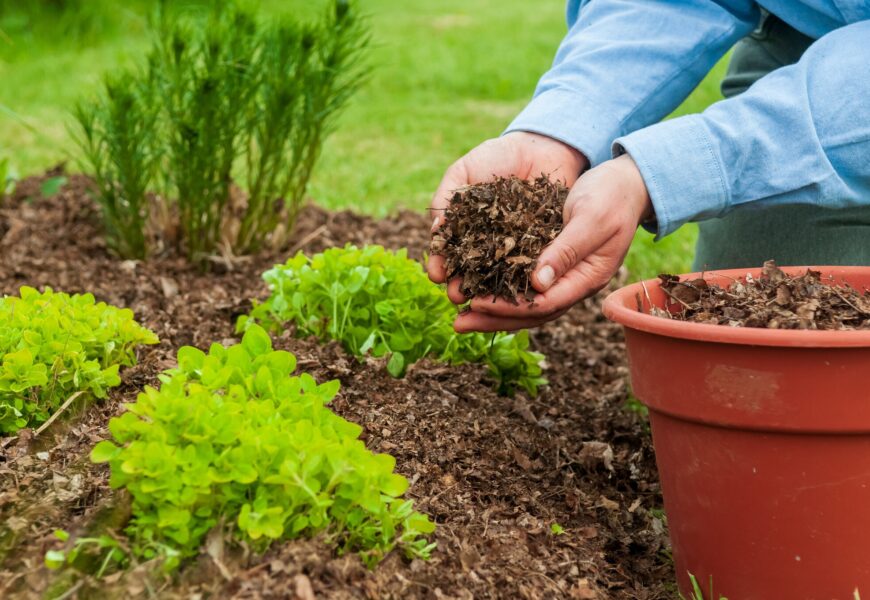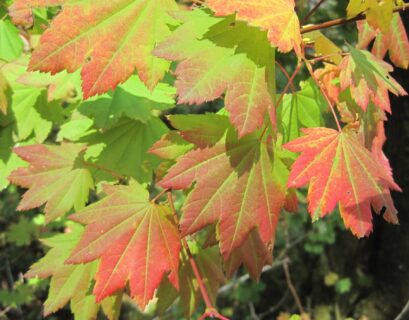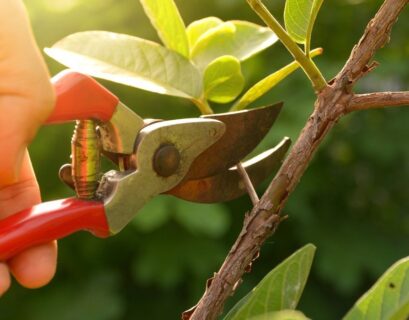Maintaining a healthy garden requires more than just regular watering and fertilizing. One of the most effective ways to ensure your plants get the moisture they need is by using mulch. Mulching not only helps retain soil moisture but also offers numerous other benefits that contribute to a thriving garden. Here’s why you should consider adding mulch to your gardening routine and how to do it effectively.
Why Mulch Matters
- Moisture Retention: Mulch acts as a protective layer over the soil, reducing evaporation and helping to retain moisture. This is especially important during hot summer months when water can evaporate quickly. By keeping the soil moist, mulch ensures that plants have a consistent water supply, promoting healthier growth.
- Temperature Regulation: Mulch helps regulate soil temperature by providing insulation. It keeps the soil cooler in the summer and warmer in the winter, creating a more stable environment for plant roots. This temperature regulation can reduce stress on plants and enhance their resilience.
- Weed Suppression: A thick layer of mulch inhibits weed growth by blocking sunlight. This reduces the need for frequent weeding and minimizes competition for water and nutrients, allowing your plants to thrive without interference.
- Soil Health Improvement: Organic mulch, such as wood chips, straw, or compost, breaks down over time and adds valuable nutrients to the soil. This process enhances soil fertility and structure, promoting healthier root systems and better plant growth.
- Erosion Prevention: Mulch helps prevent soil erosion by reducing the impact of rain and watering on the soil surface. It keeps the soil intact and prevents nutrient runoff, which can degrade soil quality over time.
- Aesthetic Appeal: Mulch can enhance the visual appeal of your garden by providing a uniform, tidy appearance. With various colors and textures available, mulch can complement your garden’s design and improve its overall look.
Types of Mulch
- Organic Mulch:
- Wood Chips and Bark: Ideal for perennial beds and around trees and shrubs. They decompose slowly, providing long-term benefits.
- Straw and Hay: Great for vegetable gardens. They decompose faster and add organic matter to the soil.
- Compost: Provides nutrients and improves soil structure. It’s suitable for all types of gardens.
- Grass Clippings: Readily available and good for adding nitrogen to the soil. Use a thin layer to avoid matting and odor issues.
- Inorganic Mulch:
- Gravel and Stone: Long-lasting and effective for decorative purposes and areas where you don’t want plant growth.
- Plastic and Landscape Fabric: Useful for controlling weeds and conserving moisture but don’t improve soil quality. Often used in vegetable gardens and under decorative gravel.
How to Apply Mulch Effectively
- Prepare the Area: Clear the area of weeds and debris before applying mulch. This helps prevent weeds from growing through the mulch layer.
- Choose the Right Mulch: Select a mulch type that suits your garden’s needs. Consider factors like the type of plants, soil conditions, and aesthetic preferences.
- Apply the Mulch: Spread mulch evenly over the soil surface. Aim for a thickness of 2-4 inches for organic mulch and 1-2 inches for inorganic mulch. Avoid piling mulch against plant stems and tree trunks, as this can lead to rot and pest problems.
- Water the Mulch: After applying mulch, water it thoroughly. This helps settle the mulch into place and ensures it starts working to retain moisture.
- Maintain the Mulch Layer: Check your mulch regularly and replenish it as needed. Organic mulch decomposes over time, so add a fresh layer each year to maintain its benefits.
Additional Tips for Mulching Success
- Avoid Over-Mulching: Too much mulch can suffocate plant roots and cause problems like root rot and fungal diseases. Stick to the recommended thickness to ensure proper moisture retention and air circulation.
- Consider the Season: Apply mulch in the spring after the soil has warmed up and in the fall to insulate roots over the winter. Adjust your mulching practices based on seasonal needs.
- Use Mulch Rings for Trees: Create mulch rings around trees by applying mulch in a doughnut shape, leaving a gap around the trunk. This prevents moisture buildup and rot at the base of the tree.
- Combine with Other Practices: Mulch works best when combined with other good gardening practices, such as proper watering, fertilization, and pest management. Together, these methods create a healthy and sustainable garden ecosystem.
Conclusion
Using mulch to retain soil moisture is a simple yet powerful strategy for maintaining a healthy, vibrant garden. By choosing the right type of mulch and applying it correctly, you can conserve water, improve soil health, and reduce the need for frequent maintenance. Start incorporating mulch into your gardening routine today and enjoy the many benefits it brings to your plants and landscape. With a little effort, you can create a thriving garden that flourishes in any season.











